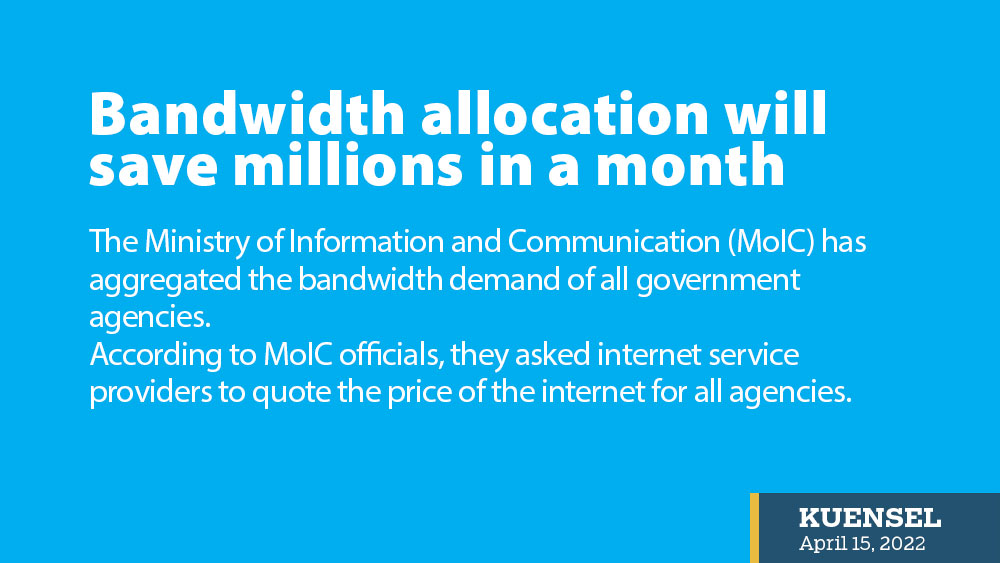Phub Dem
The Ministry of Information and Communication (MoIC) has aggregated the bandwidth demand of all government agencies.
According to MoIC officials, they asked internet service providers to quote the price of the internet for all agencies.
With the demand aggregation initiative, the internet cost has officially reduced to Nu 550 for 1 Mbps per month from Nu 1,350 per Mbps, saving the government agencies connected to the government-initiated network (GIN) Nu 800 per Mbps.
An official said that the Department of Information Technology and Telecom (DITT) could reduce bandwidth charges by 60 percent from the prevailing market rates.
Currently, the government’s spending on the internet for leased lines and broadband is estimated at Nu13.8 million (M) per month as per the data shared by the DNB (Department of National Budget).
However, the projected consolidated bandwidth, including the internet for schools, amounts to Nu 9.4M per month, saving the government around Nu 4.4million per month.
According to the officials, the savings will provide and enhance bandwidth connectivity to schools to support the ‘ICT in schools’ flagship programme, especially for the implementation of code monkey in schools across the country.
Codemonkey is an introductory programming course that will help students develop coding skills and further generate interest amongst the students in the ICT field.
MoIC is leveraging the already established ICT infrastructure to connect agencies in remote areas for digital transformation.
In the Plan, the ministry is executing the GIN project as part of the Digital Drukyul Flagship programme with financial support from the government of India.
More than 1,000 government agencies, including research and educational institutes and health facilities throughout the country, will be connected with optical fibre network infrastructure through this project.
Today, about 900 agencies are connected to the GIN network, providing online services that benefit the public.
Officials said that the remaining unconnected agencies, primarily located in the red zone dzongkhags, are delayed by logistical challenges and constraints due to the Covid-19 restrictions.


